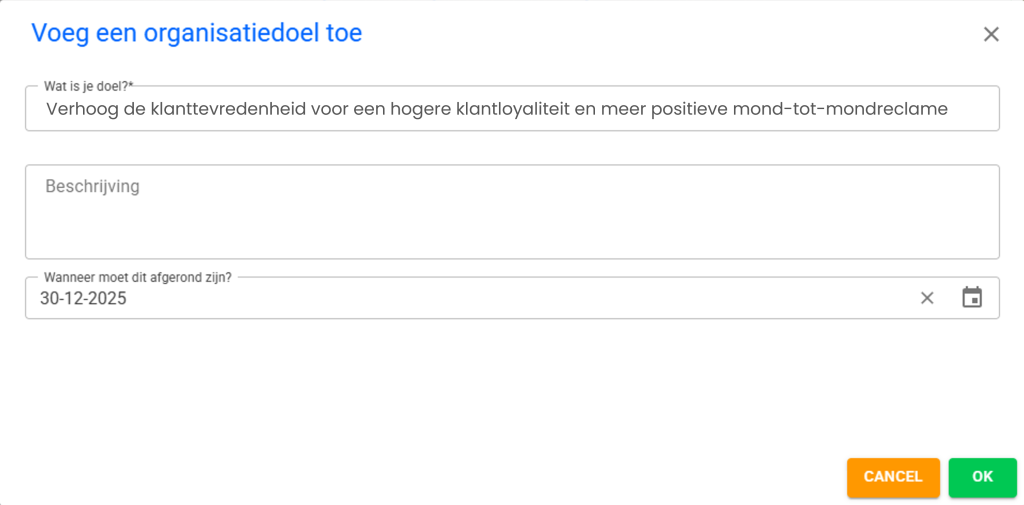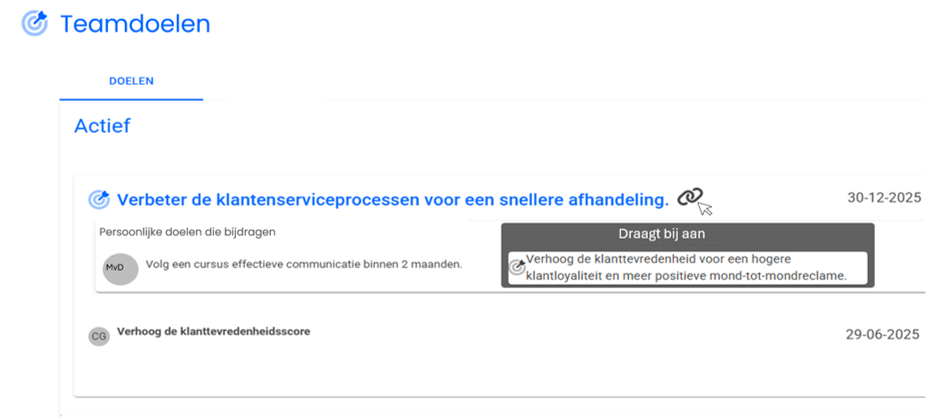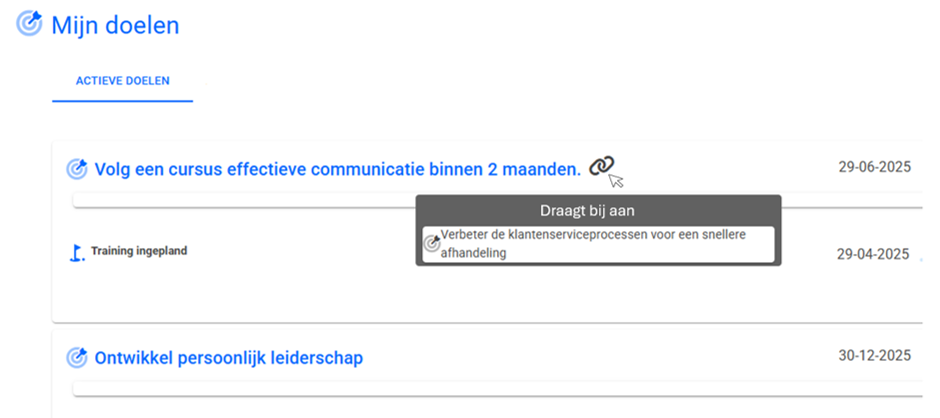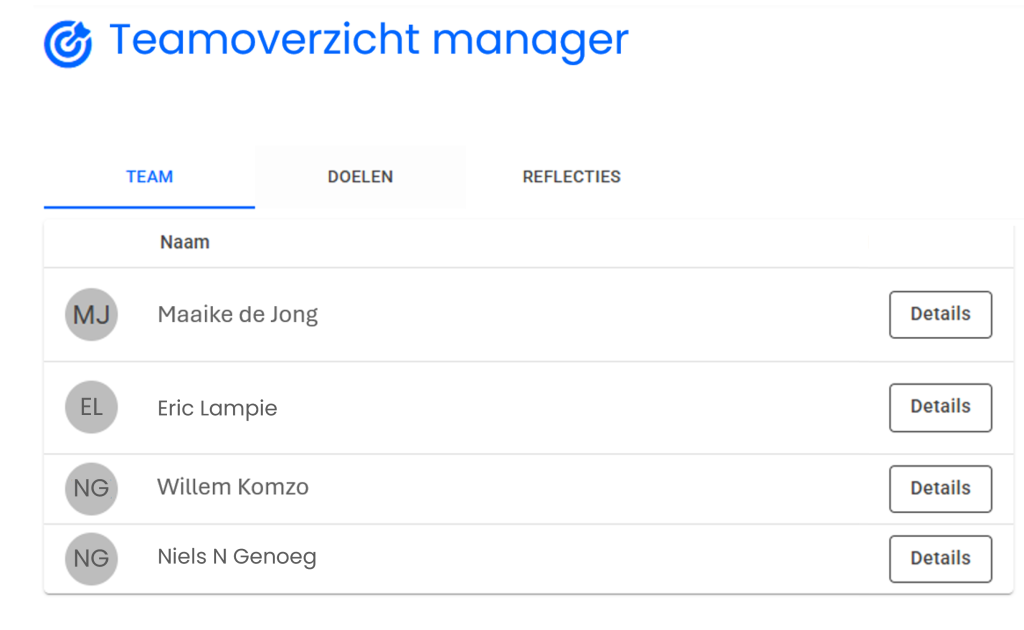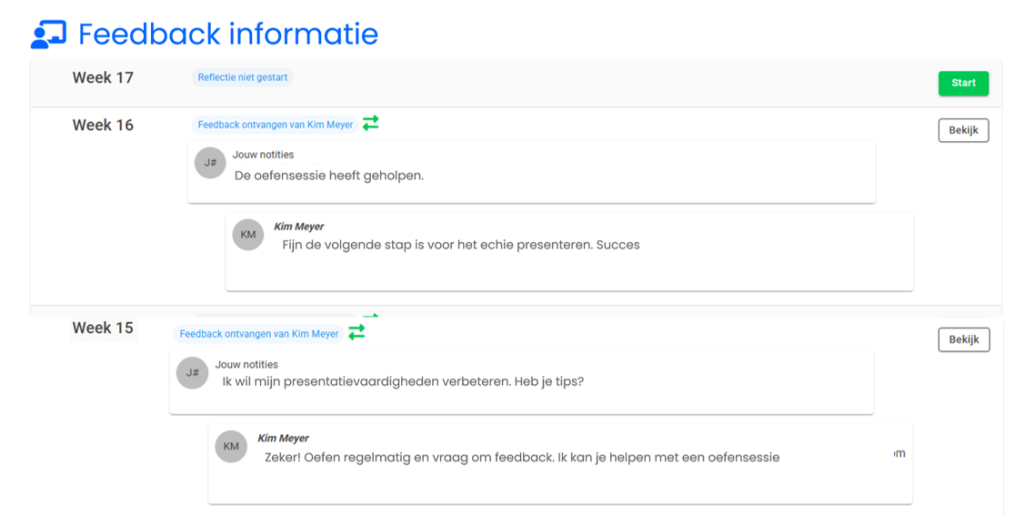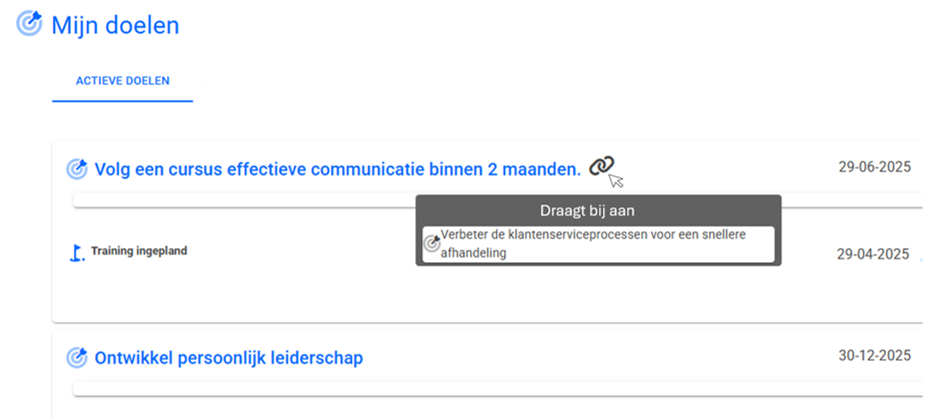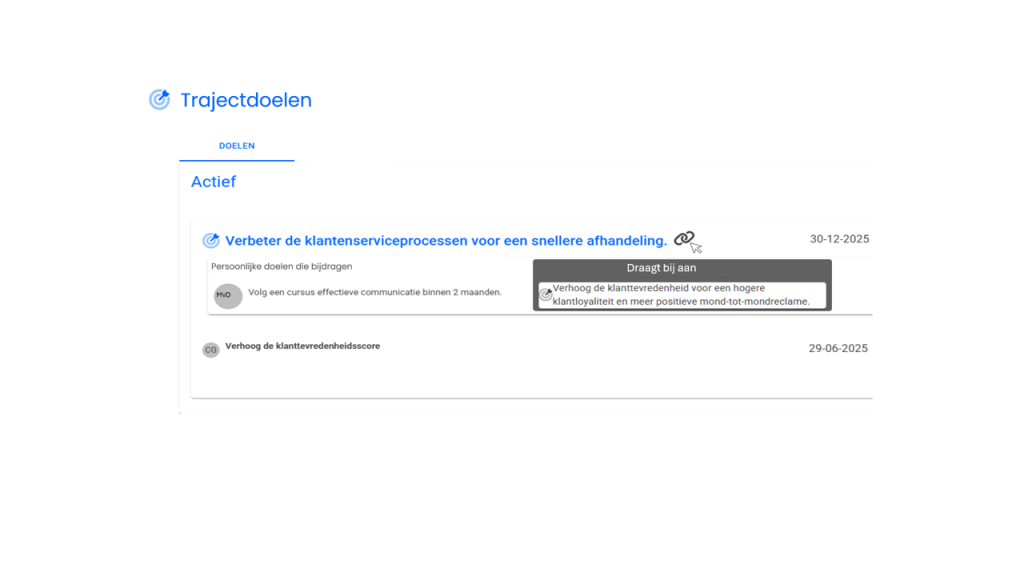Usecase 1
Connecting goals
Easy-to-use software that helps align individual performance with broader organizational goals.
Clear organizational goals define the direction of the organization, to which team and individual goals can be linked.
This creates a sense of connection and responsibility within the team, enabling everyone to effectively contribute to shared objectives.
Organizational goal
Telling the organization’s story is essential to inspiring and engaging employees.
A clear narrative connects everyone to the company’s direction, creating a common focus.
This helps employees align their daily tasks with the broader strategy, fostering collaboration and motivation.
Team goal
Linking (optionally) team goals to organizational objectives can be a powerful way to create shared responsibility and direction.
Team goals connected to broader organizational objectives enhance employee engagement and motivation, as they see how their efforts directly contribute to the organization’s success.
Usecase 2
Central overview for managers
Provides leaders with insight into the objectives of all team members.
Thanks to a central overview of progress, developments and performance within the team can be easily tracked.
This helps identify strengths and areas that need improvement, allowing effective management of team objectives.
Usecase 3
Easily applicable HR Cycle
Offers a structured and efficient conversation cycle for conducting progress discussions.
One of the main advantages of this cycle is the ability to digitally record discussion information at the employee’s dossier level.
This ensures that both managers and employees always have access to relevant information without relying on separate documents or emails, thereby reducing administrative burdens.
|
Actionplan | |
|
1 |
Set goals and actions in CareerTracker |
|
2 |
Manager and employee determine the frequency of discussions and feedback |
|
3 |
Track progress through reflections (automatically provided) |
|
4 |
Reflection serves as a discussion tool for personal meetings |
|
5 |
Update goals monthly for insights |
|
6 |
Centralized space for growth and development |
Usecase 4
Clearly displayed performance information
Enables leaders to conduct progress discussions about achieved goals and centrally record actions.
Feedback information is clearly displayed for both employees and managers, ensuring transparent communication and clear follow-up on agreements.
This promotes constructive dialogue and helps optimize team performance.
Usecase 5
Making an impact with goals
As an employee, you have the opportunity to align your personal goals with the goals of your team and the organization.
As a result, you not only make a direct contribution to the success of the team, but you also actively contribute to achieving the organizational goals.
By aligning your personal goals with the common goals, you can visibly contribute to results and take responsibility for success together with your team.
This process not only strengthens your personal growth and development, but also supports the joint progress of the organization.
This is how you make an impact on multiple levels!
Usecase 6
Working together efficiently and based on trust
As a team, you want to work together effectively, build trust and clarity in the goals.
A structured approach ensures that everyone contributes to joint successes, with clear insights into progress and growth.
By recording concrete goals and actions and evaluating them regularly, a transparent working method is created in which everyone knows where he or she stands.
Moments of reflection ensure that both the team and individual team members take steps forward.
In this way, the team works purposefully, with trust and commitment to lasting progress.
